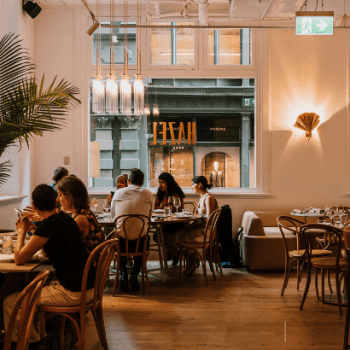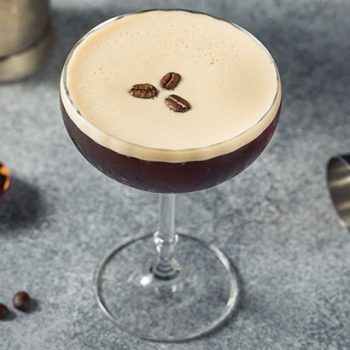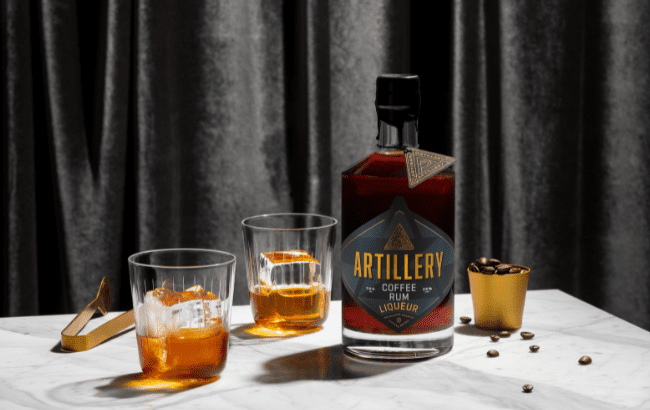Coffee and cocktails: bartending’s perfect match
As the worlds of coffee and cocktails continue to collide, we explore how coffee cultures around the world make this popular ingredient such a perfect match for bartending.

*This feature was first published in the May issue of The Spirits Business magazine.
Tucked away on a leafy side street just off Bangkok’s bustling Sukhumvit Road is the start of a chic foodie district. Highly instagrammable cafés give celebrated restaurants a run for their money. Stylish students queue up for exactingly prepared roasts, blends, and beans. Bangkok is a coffee city – one of many destinations around the world where a vibrant coffee scene is at the forefront of hospitality.
GMD Research says the global speciality coffee market will grow by almost 13% by 2030, hitting US$120.1 billion. And while the demand for on-the-go coffee will partly spur the growth, most notable will be the increasing consumer interest in all aspects of sourcing and preparing. Premium coffee shops and roasters are primed for the boom.
 As with any trend, the proliferation of coffee culture is not universal. Along with Bangkok, cities such as Portland, Taipei, Helsinki, Vienna and Hanoi have become unofficial embassies of the bean. Not only do they offer locals and travellers an array of shops and roasters, their cafés are wildly influential. That the population is so soaked in coffee stretches into all aspects of its individual culture. While each is wildly distinct, they have a coffee fingerprint in common. Another such city that springs to mind when one considers coffee culture is Melbourne, Australia.
As with any trend, the proliferation of coffee culture is not universal. Along with Bangkok, cities such as Portland, Taipei, Helsinki, Vienna and Hanoi have become unofficial embassies of the bean. Not only do they offer locals and travellers an array of shops and roasters, their cafés are wildly influential. That the population is so soaked in coffee stretches into all aspects of its individual culture. While each is wildly distinct, they have a coffee fingerprint in common. Another such city that springs to mind when one considers coffee culture is Melbourne, Australia.
Coffee is ‘second nature’
According to Tom McHugh, bar manager at The Mulberry Group’s Hazel, Melbourne’s love affair with coffee began in the 1940s and 1950s, thanks to Italian immigrants. “With that came a huge love of coffee that only got stronger with every generation,” he says.
Coffee is the cornerstone of social calendars, he continues. When the city’s brunch scene exploded, talented chefs left fine dining for cafés. The result was elevated perceptions of breakfast and lunch. Soon, baristas followed suit and innovation in the sector really kicked off.
Crossovers start, he says, when you consider the similarities in the drinking occasions of coffee and cocktails: relaxed, social, convivial. And then there’s the flavour element.
“Coffee is a cool ingredient, with almost four times the amount of detectable tasting notes than wine,” McHugh states. “Using specific roasts, blends and beans you can really hone in on certain flavours and styles, which is a huge part of progressive cocktails.”
Another similarity between spirits and coffee – and why when paired together they resonate so powerfully with consumers – is the focus on provenance, and its inherent sustainability element. Very few could name bean varieties, McHugh continues. However, “people care so much more about the prestige of the producing areas – so many Rwandan, Ethiopian, Kenyan filter roasts at the moment, it’s all the rage – and the ethics of the sourcing and wholesaling company.”

Brands on the coffee side have noted the potential, too. Ben Charalambous is the co-founder at the UK’s Rise Coffee Box subscription service. “The most successful coffee shops and roasters have distinctive brands that use creativity to showcase their artisanal backgrounds and high-quality ingredients,” he says. “We see this shared with premium alcoholic drinks brands.”
But it’s not all highbrow. There’s an appreciation, even in Melbourne, that the modern classic Espresso Martini is the first port of call when it comes to dabbling in coffee cocktails. “The Espresso Martini makes up a huge part of any cocktail bar’s revenue, you can’t get away from it on a weekend,” he affirms. “Its ‘wake me up and fuck me up’, as Dick Bradsell [who invented the cocktail] said. It’s like going out on the town ordering vodka Red Bulls, but cooler.”
Brand opportunities
Melbourne’s Artillery Distillery tapped into the city’s love of coffee when it came to developing its Coffee Rum Liqueur. When the distillery was founded in 2015, there was a coffee roastery in the building. “Melbourne has long loved coffee, pioneering globally a leadership in all things artisan roasting,” says distillery founder Paul Baggio. “In a city like Melbourne, it did not take much to see these two wonderful products marry to forge a wonderful Espresso Martini.”
Baggio adds: “The bitterness of Arabica coffee works brilliantly with the smooth sugarcane- or molasses-distilled base from which rum is made.”
It was in the brand’s own cocktail bar that the product started to gain traction. “Our distillers, with our bar team, put together a great recipe, and ultimately its popularity saw it packaged to distribute around the country. As with the world’s love affair with Melbourne coffee and its hospo scene, there’s little surprise the first lots were snapped up to send overseas.”

Further afield, and Spanish liqueur Licor 43 has long aligned itself with coffee culture. From the Café Asiatico in Cartagena and Café Barraquito in Tenerife in the 1950s to the Carajillo 43 today, it has tailored its approach in certain markets, depending on each location’s relationship with coffee.
“Our signature serve for several years has been the Carajillo, and the key country for this is Mexico – although we’ve seen quite staggering growth in Brazil and the US as well,” says Oliver Svatek, Licor 43 global brand director. “The Carajillo gained popularity in Mexico as it grew as part of the cultural tradition of enjoying the sobremesa moment [relaxing after dinner]. Then the ‘shaken’ part of the ritual grew naturally, as this improves the taste of the serve.”
Why the connection in the first place? “There is a natural marriage of aromas and flavours between Licor 43 and coffee – similar complexity and flavour characteristics allow for a different experience every time, depending on the type of coffee and extraction method,” he says.
“For example, you can enhance the sweet notes of an espresso; the botanical notes of cold brew, and the citric and floral notes of a filter coffee.”
Every year the brand champions the role of coffee in cocktails with its annual Bartenders & Baristas Challenge. “We call on coffee and cocktail professionals around the world to showcase their expertise and imagination in the art of pairing Licor 43 and coffee,” Svatek says. In recent years, Gran Canaria has been the destination. This year, the event will take place in Madrid.
Shared innovation
Perhaps one of the most exciting – and universal – elements of shared coffee and cocktail culture is the focus on innovation. “It’s super nerdy but I had an ultrasonically roasted espresso/amaro cocktail a few years ago in Edinburgh,” McHugh recalls. “It’s a really boutique way to roast coffee, using ultrasonic vibration compared with conventional roasting.”
He adds that he’s seen lots of venues using cascara, the dried outer fruit of coffee cherry, as an ingredient. “I’ve used parchment too, the roasted mucilage outside the bean that is washed off before roasting. It tastes like honey and barley – it’s super complex.”
When it comes to coffee and cocktails, it’s clear that one sharpens the other. And consumers are certainly happy about that.
Related news
The Radicle brings $10 cocktails to Chicago
